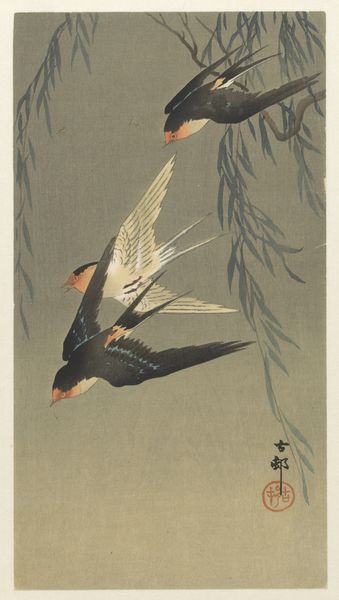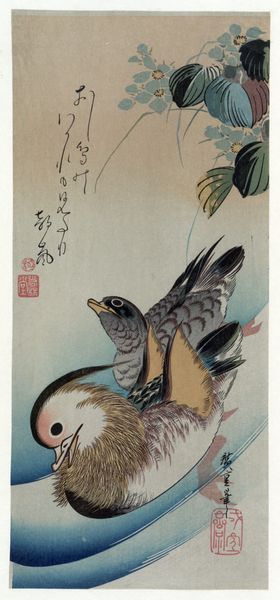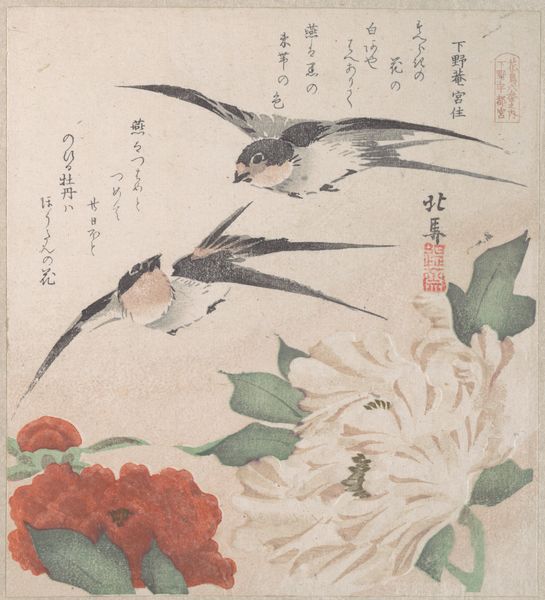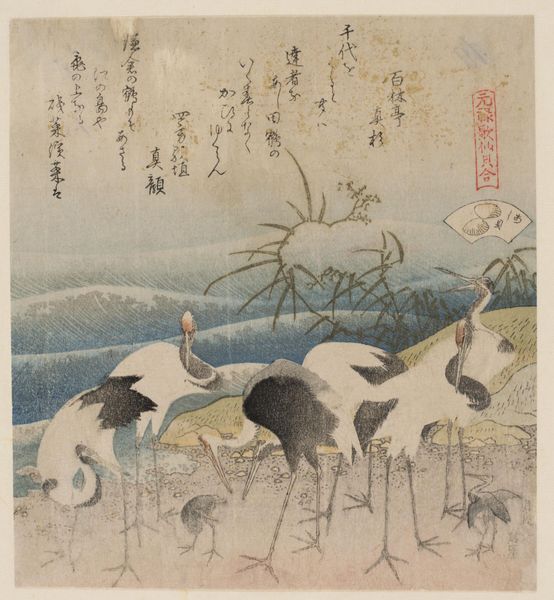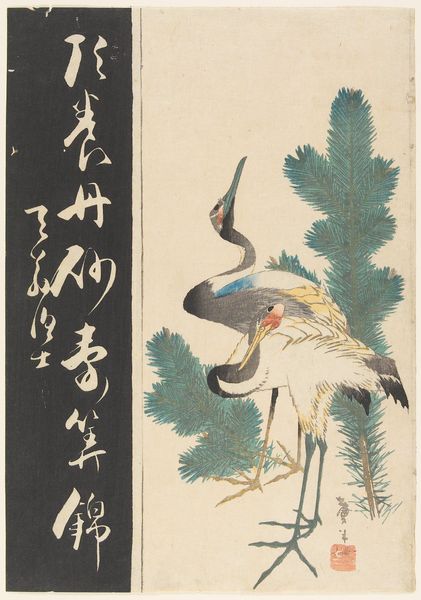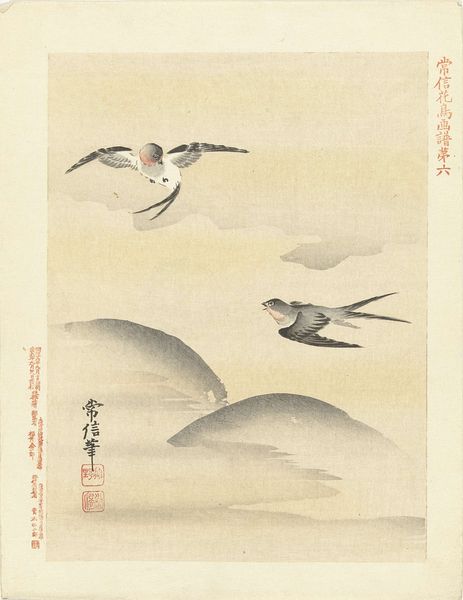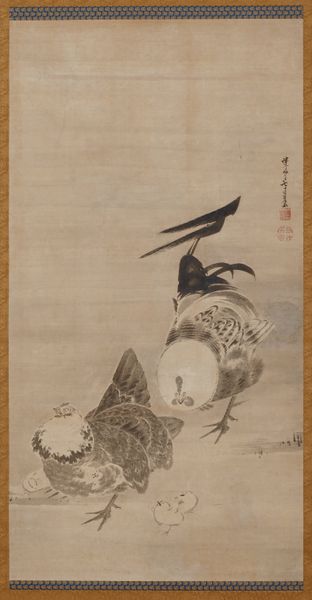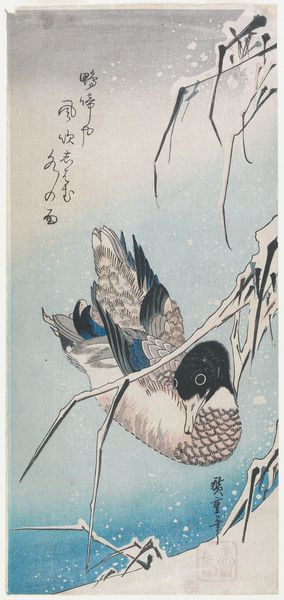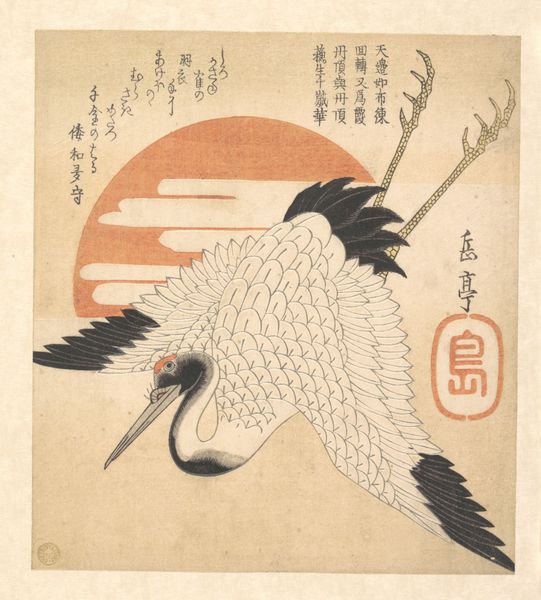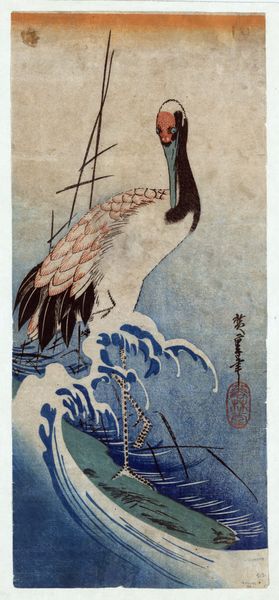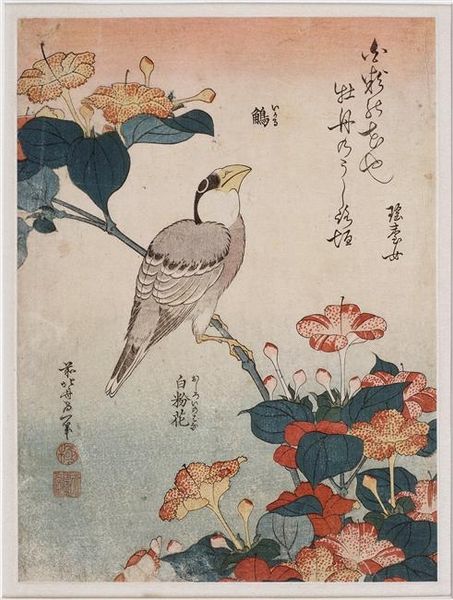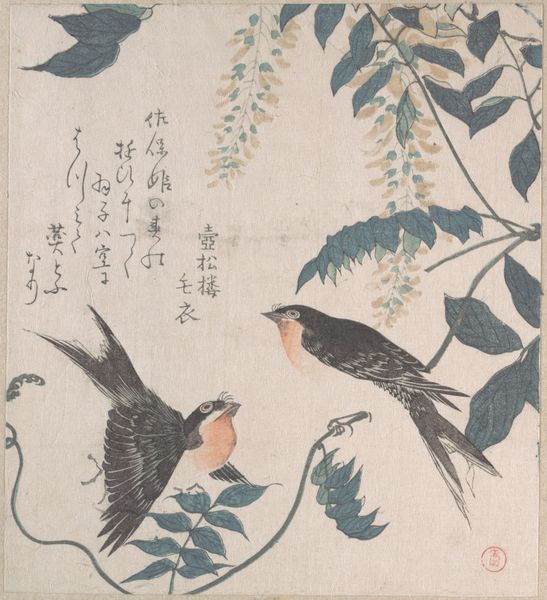
print, ink, woodblock-print
# print
#
asian-art
#
landscape
#
ukiyo-e
#
figuration
#
ink
#
woodblock-print
#
orientalism
#
line
Dimensions: 14 3/4 × 10 1/16 in. (37.4 × 25.5 cm) (image, vertical ōban)23 × 19 × 1 1/2 in. (58.42 × 48.26 × 3.81 cm) (outer frame)
Copyright: Public Domain
Curator: Look at the haunting quality of Hiroshige's "Flying Geese and Full Moon," made around 1842 or 1843. Editor: Immediately, the simplified shapes, especially the moon, give it a timeless feel. And there’s something melancholic in the silhouetted forms and muted colours. Curator: This work employs a traditional Japanese woodblock printing technique, ukiyo-e. We should consider the labour and material realities of producing prints at this time – the skill of the woodcutter, the pigments used, and the distribution networks that allowed these images to reach a wide audience. How did the commodification of landscapes affect people's relationship with them? Editor: I see the geese as messengers. Flight is a powerful symbol in art. Here, it speaks to journeys, perhaps even spiritual ascension, especially in contrast with the moon – a feminine symbol representing time and cyclical existence. Are the geese connected to a folk tale? Curator: Interesting connection! Ukiyo-e were often collaborative endeavors. The publisher held significant power, determining subjects and commissioning artists, cutters and printers. Understanding this division of labor informs how we view Hiroshige’s artistic role, embedded as it was in a larger commercial structure. The material conditions of art are very telling about the means of art-making. Editor: Absolutely! And perhaps the shadows mimic the uncertainty that comes with such cyclical transformation. In my opinion, this is enhanced by the flat, almost abstract rendering of light and shade. These sharp shadow angles aren’t natural; the unnaturalism imbues them with cultural meaning, or even dreamlike possibilities. Curator: Focusing on production also pushes back against the idealized view of the lone artist. Instead, the focus falls on the social interactions that shape artwork and contribute to art's value in circulation and consumption, highlighting labor history, technique and printing and binding, really taking in the physicality of making. Editor: Ultimately, whether read through production or the resonance of symbols, "Flying Geese and Full Moon" resonates across centuries. Curator: The layering of labour and landscapes offers so much for interpretation!
Comments
No comments
Be the first to comment and join the conversation on the ultimate creative platform.

